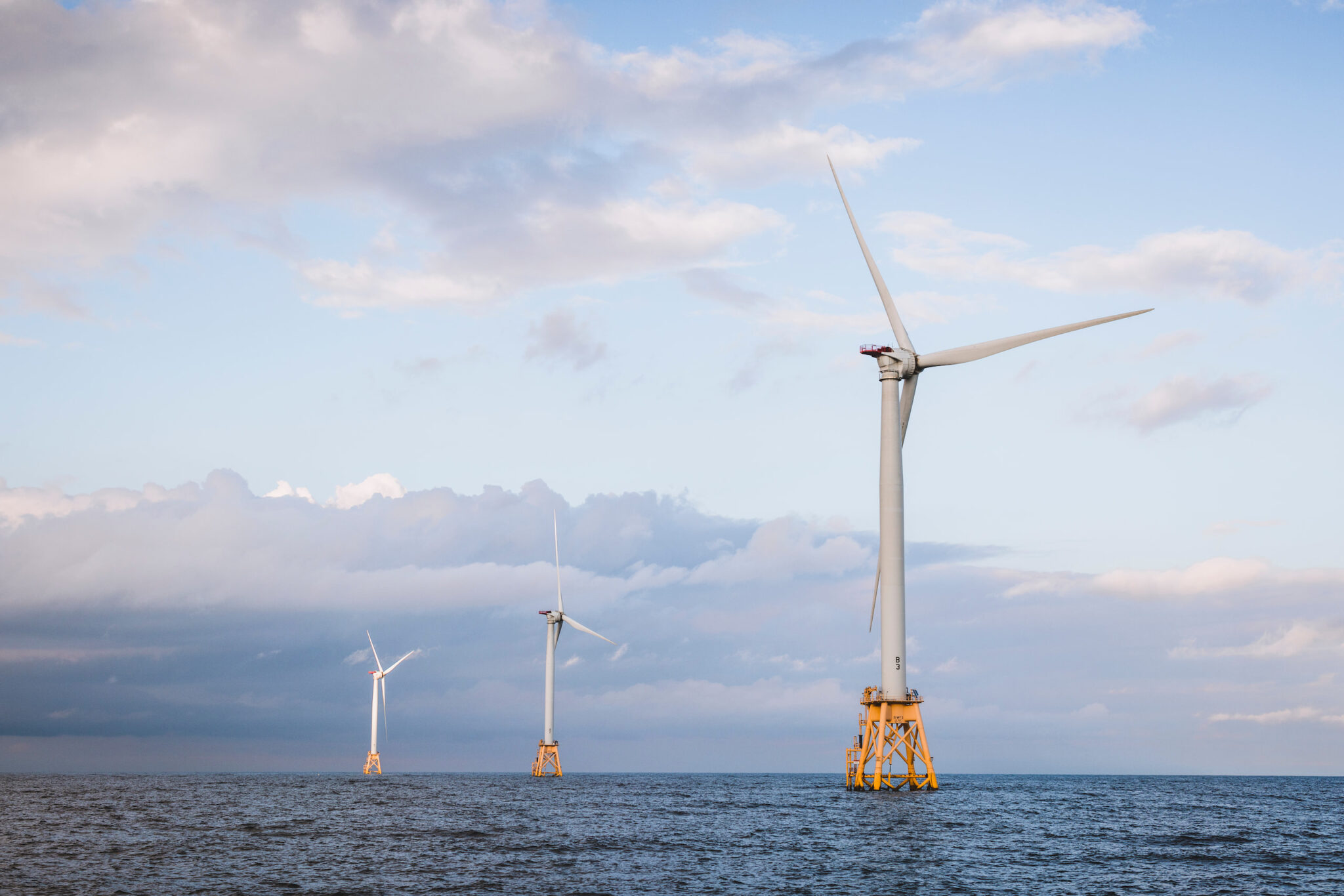Why Offshore Wind Power is Key to Meeting U.S. Electricity Demand
Offshore wind power offers a vital solution for the U.S. electric grid by delivering clean, reliable energy to densely populated coastal regions, while also bolstering the economy and protecting our air and water from harmful pollution and emissions. With nearly 80% of Americans living within 200 miles of the coast, offshore wind is uniquely positioned to meet the rising demand for electricity in these high-consumption areas. The consistent winds offshore ensure a stable and sustainable power source, making it America’s next great energy opportunity.
Stable, Long-Term Energy Supply
Once installed, offshore wind turbines provide a stable energy supply: prices can be locked in for over 20 years, shielding consumers from volatile energy prices. These turbines, which can generate up to 14 MW—nearly three times the capacity of onshore turbines—are built to capture strong, consistent offshore winds, ensuring high efficiency and reliability.
Economic & Environmental Benefits
Investing in offshore wind isn’t just about energy; it’s also about job creation and economic growth. By 2030, the offshore wind sector is expected to create 56,000 jobs in construction, maritime, manufacturing, and operations—if all the planned projects move forward. This growth will also bolster American energy independence by increasing domestic clean energy production, reducing reliance on foreign energy sources. Additionally, it will cut harmful emissions and pollution and improve air and water quality.
A Growing Industry
The offshore wind industry in the U.S. is poised for significant growth. ACP’s 2024 Offshore Wind Market Report finds that as of 2024, the U.S. has 174 MW of offshore wind capacity online and nearly 63 GW in development.
Projects in early development account for 47,000 MW. 11,000 MW of projects are in advanced stages and 4,000 MW are under construction.
- A project in early development has a seabed lease with state or federal authorities, but does not have an active procurement contract and has not begun construction.
- A project in advanced development has secured a procurement contract, but has not begun in-ocean construction.
- All offshore wind projects seek an offtake agreement; and state solicitations for bids are closely watched by the industry.
As of June 2024, there are 41 active leases for offshore wind energy projects: 37 federal and 4 state leases. Within these leases, there are a total of 47 active projects in development and three projects that are fully online. 33 of these projects are in early development, 11 are in advanced development, and three projects are under construction: the Coastal Virginia Offshore Wind Project to serve Virginia, Vineyard Wind 1 for Massachusetts, and Revolution Wind to serve Connecticut and Rhode Island.
In the latter half of 2024, states are expected to award procurement contracts for an additional 8,800 MW to 12,200 MW of offshore wind projects, as New Jersey and New York have competitive processes underway to award contracts.
ACP’s Role in Supporting Offshore Wind
The American Clean Power Association (ACP) plays a crucial role in advancing the offshore wind industry. Through research, resources, and advocacy, ACP works closely with the industry to ensure offshore wind projects are developed responsibly and to educate the public and lawmakers on industry efforts to consider the projects’ impacts on marine life, coastal communities, tribes, fisheries, and the environment. ACP also works closely with bipartisan state and federal lawmakers to streamline permitting processes, creating a favorable business environment for the industry’s growth.
Our work and advocacy have built a market for offshore wind energy in coastal states and led to successful permitting outcomes for projects at the federal level. In fact, as of September 2024, nine Construction and Operations Plans (COPs) have been approved in the last four years, with more expected on the horizon.
Offshore wind power is essential to meeting the U.S.’s growing electricity needs while fostering a resilient energy future. As the industry continues to expand, it will play a crucial role in driving economic growth, job creation, and environmental protection along America’s coasts.

